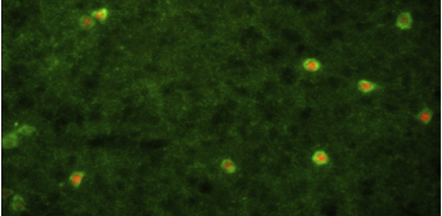
Although psychostimulants and antidepressants rapidly bind their pharmacological targets in the brain, chronic exposure to these substances is required for their effects on addictive- or depressive-like behaviors. This observation indicates that slower processes downstream of monoamine receptor activation, which include the induction of new gene transcription, are essential for the action of these drugs on the neural circuits that underlie these behaviors. A growing body of evidence suggests that epigenetic mechanisms of chromatin regulation, such as histone modifications and DNA methylation, contribute to the long-lasting changes in gene expression induced by repeated exposure to these psychoactive compounds. In collaboration with Dr. William C. Wetsel, Director of the Duke University Mouse Behavioral and Neuroendocrine Analysis Core Facility, we have been investigating the role of the methyl-DNA binding protein MeCP2 in this process. We showed that genetic manipulation of MeCP2 expression in the nucleus accumbens of adult mice modulates behavioral adaptations to amphetamine, implicating MeCP2 for the first time as a modulator of psychostimulant-induced reward. We further discovered that activation of dopamine and serotonin receptors in the brain drives the phosphorylation of MeCP2 at a specific site (Ser421) in selected neural circuits relevant for reward- and stress-related behaviors, thus suggesting a mechanism to link regulation of MeCP2 function with the pharmacological action of psychostimulants and antidepressants.
Currently we are studying the biological importance of monoamine-regulated MeCP2 Ser421 phosphorylation in mice bearing a germline mutation that changes Ser421 to Ala, rendering MeCP2 non-phosphorylatable at this site. This mouse model selectively disrupts only the stimulus-regulated functions of MeCP2, providing us with a unique opportunity to address the importance of DNA-methylation dependent chromatin plasticity in the behavioral plasticity induced by psychostimulants and antidepressants.